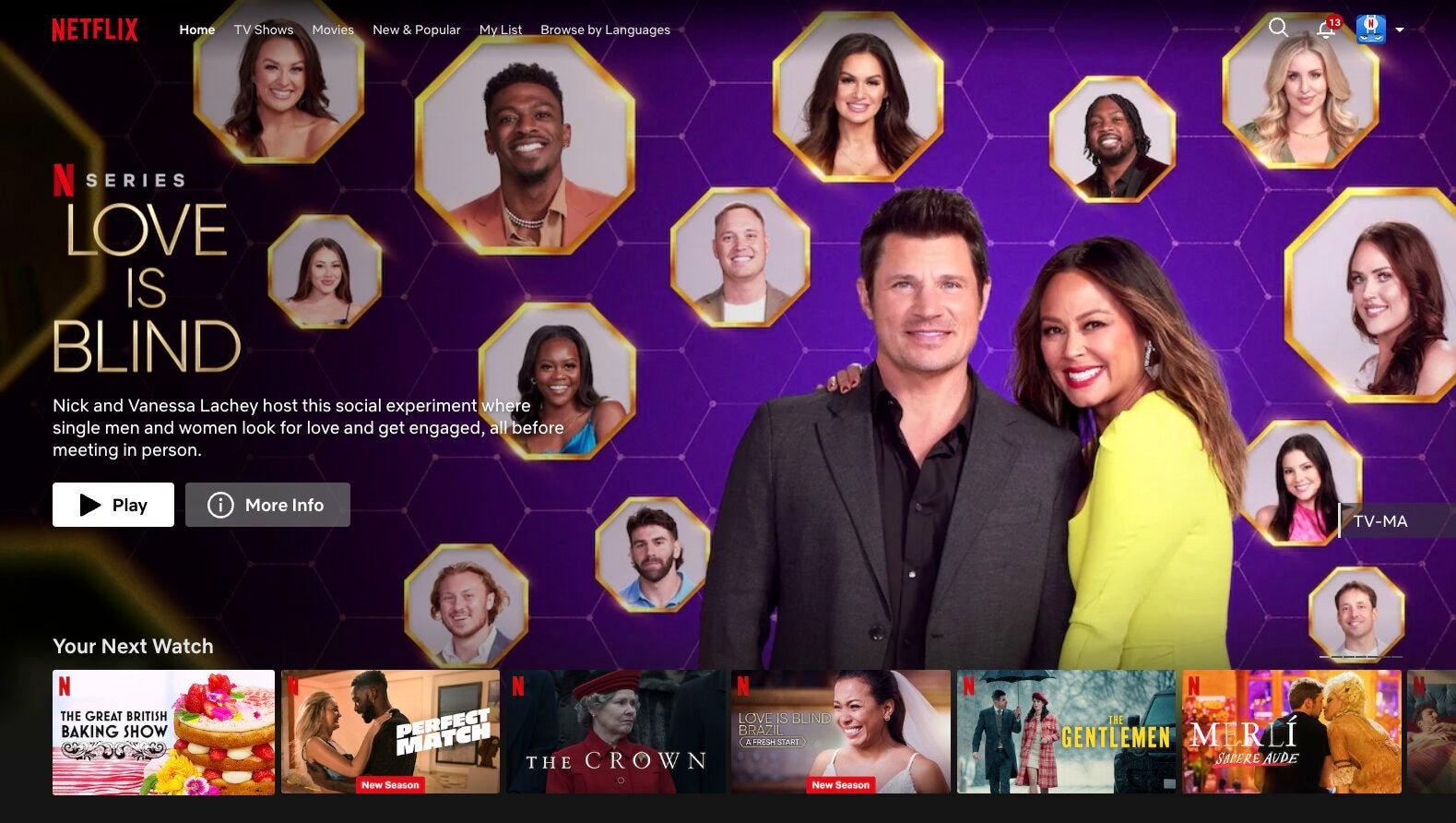Netflix Eliminating Cheapest Ad-Free Plan, Forcing Some Customers to Ad-Supported or More Expensive Plans
The world’s largest streamer would prefer customers pay far more monthly or sign up for the ad-supported tier.

Make no mistake about it, Netflix does not want to make it affordable for you to stream its service, at least not ad-free. Since launching an ad-supported plan in November 2022, the world’s largest streaming service has been aggressively pushing consumers away from their higher-priced ad-free subscription tiers in favor of the cheaper — but more profitable — ad-supported options, even if those customers are already paying customers. In recent days, Netflix has begun informing some users currently signed up for the ad-free Basic plan that their service will end at the conclusion of their current billing cycle unless they sign up for a new plan.
Key Details:
- Netflix is letting some customers on the Basic plan know that their subscriptions will end with their next billing cycle unless they sign up for a new plan.
- This change has been in the works for months, but Netflix is now making it official.
- The streamer would prefer that customers pay more monthly or opt for the higher-revenue ad-supported plan.
Last summer, Netflix moved to eliminate the Basic ad-free plan for new customers in the United States and the United Kingdom. The plan was the cheapest for the service that didn’t come with commercial breaks costing just $9.99 per month at the time — now $11.99 in the U.S. The goal of the move was clearly to push new customers to either the higher-priced Standard ad-free subscription at $15.49 monthly or the lower-cost Basic with Ads plan for $6.99 per month. While Netflix would lose out on subscription dollars if the consumer opted for the Basic with Ads plan, the streaming giant would more than make up for the shortfall with the influx in advertising dollars.
At the time of last summer’s move, Netflix was only removing the Basic plan as an option for new customers, but earlier this spring, Netflix began warning customers still on the low-cost ad-free plan that they would need to move to a different tier sometime this summer. The streamer said that this would first begin to impact customers in the U.K. and Canada before rolling out to other territories, including presumably the United States.
What Other Subscription Options Are Available on Netflix?

Image by Reddit user r/mildlyinfuriating
As first noticed by The Verge, a number of Netflix customers recently took to Reddit to share that Netflix had contacted them about the necessity to make a change to their plan. Nearly all of the Redditors impacted appear to be from the U.K. and Canada, confirming Netflix’s original plans, but nonetheless, those customers are being told that they will need to either sign up for a more expensive ad-free plan or drop down to the ad-supported Basic with Ads plan.
While prices vary between countries and currencies, when this change is inevitably brought to the U.S., customers will have to go from their $11.99 Basic plan to either the $6.99 Basic With Ads or $15.49 Standard option; of course, the $22.99 Premium plan is available as well, but it is unlikely that many customers will make the $11 jump from Basic to Premium.
Why Is Netflix Forcing Customers Off of the Basic Ad-Free Plan?
For much of the history of the streaming era, services focused almost exclusively on subscriber count, as that was used to justify investors’ and stockholders’ confidence in the future of the enterprise. However, as streaming has begun to reach maturation and the market is approaching full saturation, there has been a shift from customers to revenue. Obviously profitability is the ultimate goal, and Netflix is the only major domestic streamer that is routinely profitable — in the first quarter of 2024, the streamer reported revenue of $9.37 billion, up 14.8% year-over-year.
However, one metric that is increasingly important, especially for a service like Netflix that boasts roughly 270 worldwide customers, is average revenue per user (ARPU) or average revenue per member (ARM) — Netflix uses the latter term. Therefore, in trying to increase how much money each customer generates, the ad-supported plans are especially beneficial, because they offer not only the base subscription rate, but also the ongoing advertising revenue generated from the additional ad impressions. Therefore, Netflix is able to collect money on both ends of those subscriptions while they only take in the monthly rates for the ad-free plans, making the ad-supported options more beneficial for the streamer, despite being cheaper for the consumers.
As further proof that Netflix would prefer customers move to the ad-supported plan, when the streamer increased prices last fall, it did so on the Basic and Premium plans, but left the Basic with Ads and Standard rates where they were.
Netflix
Netflix is a subscription video streaming service that includes on-demand access to 3,000+ movies, 2,000+ TV Shows, and Netflix Originals like Stranger Things, Squid Game, The Crown, Tiger King, and Bridgerton. They are constantly adding new shows and movies. Some of their Academy Award-winning exclusives include Roma, Marriage Story, Mank, and Ma Rainey’s Black Bottom.


